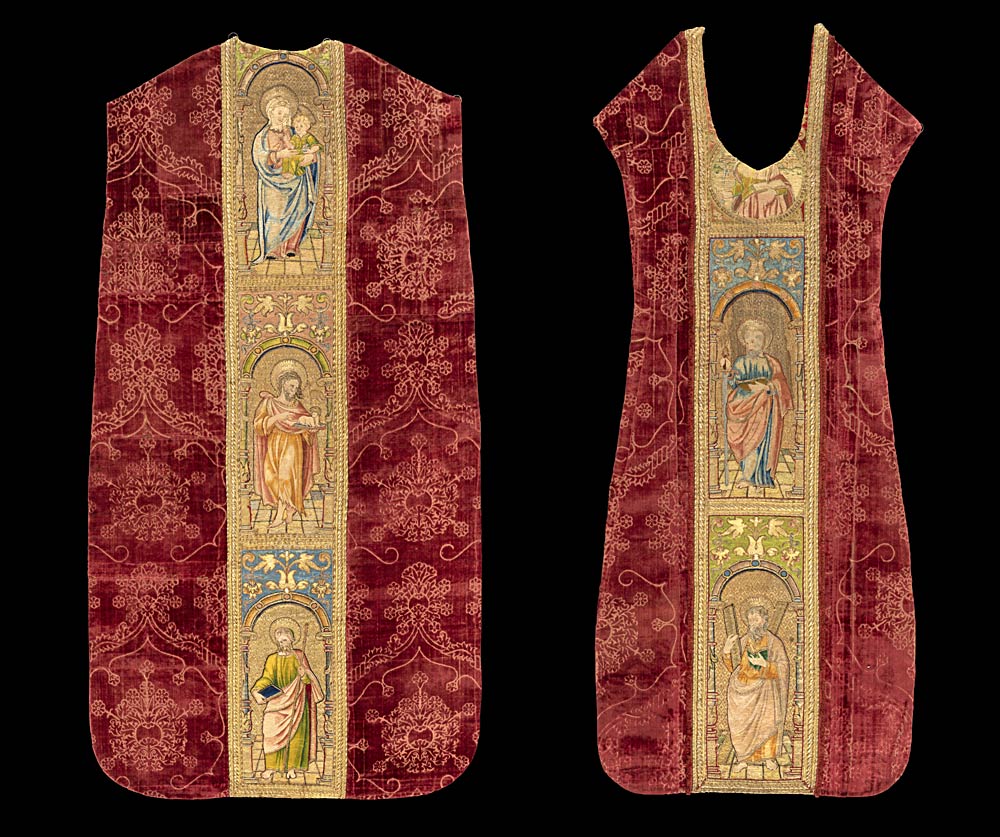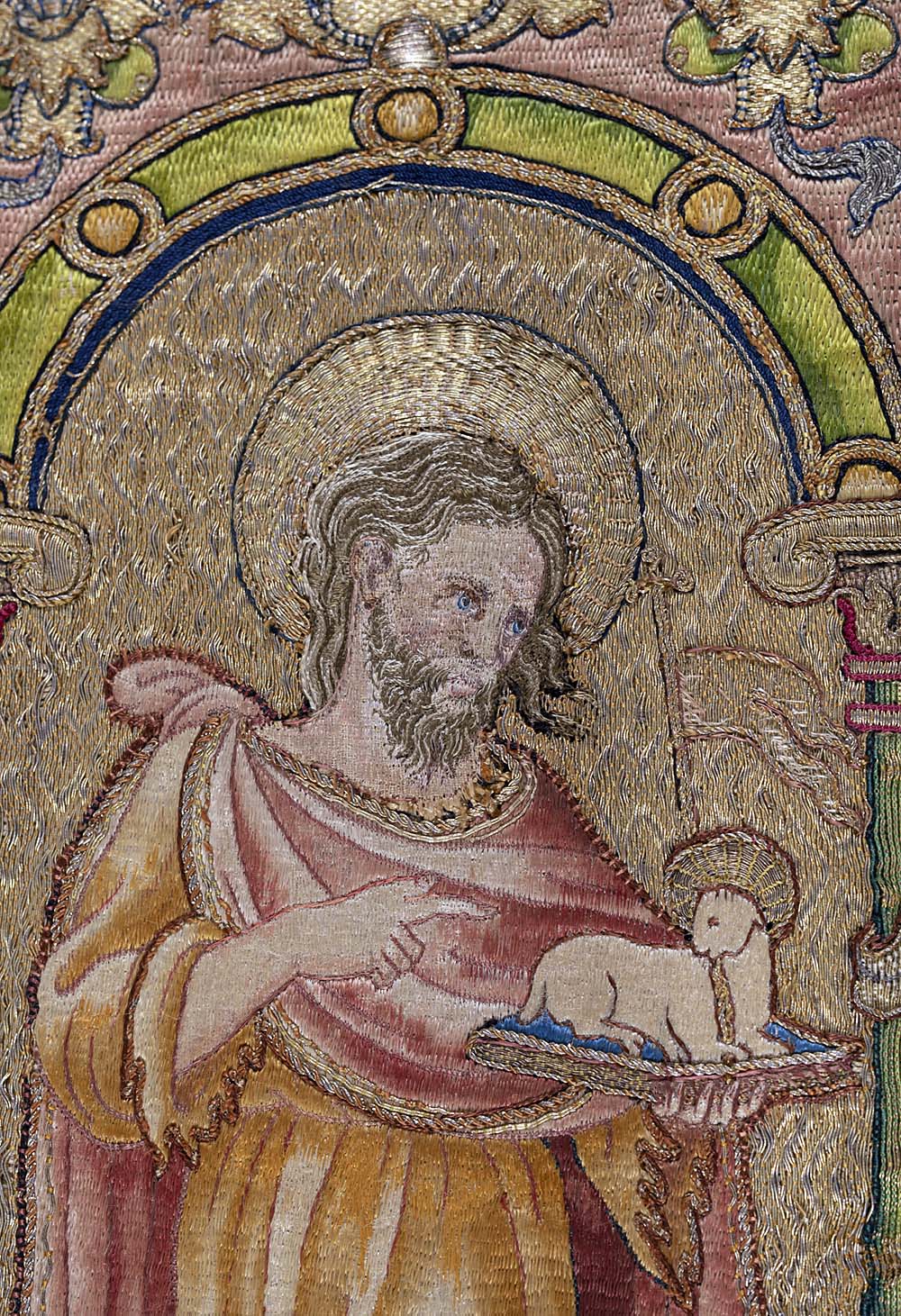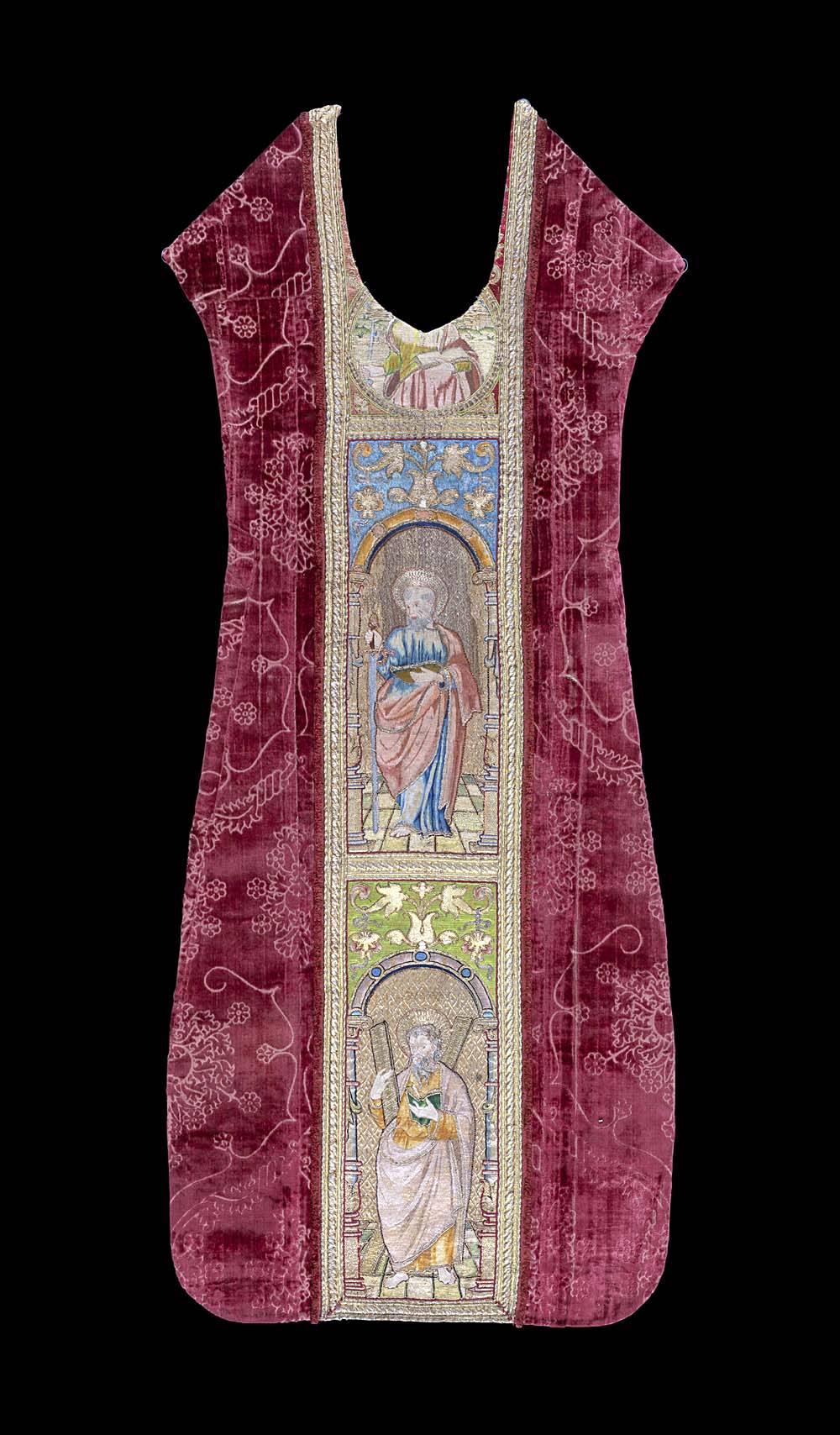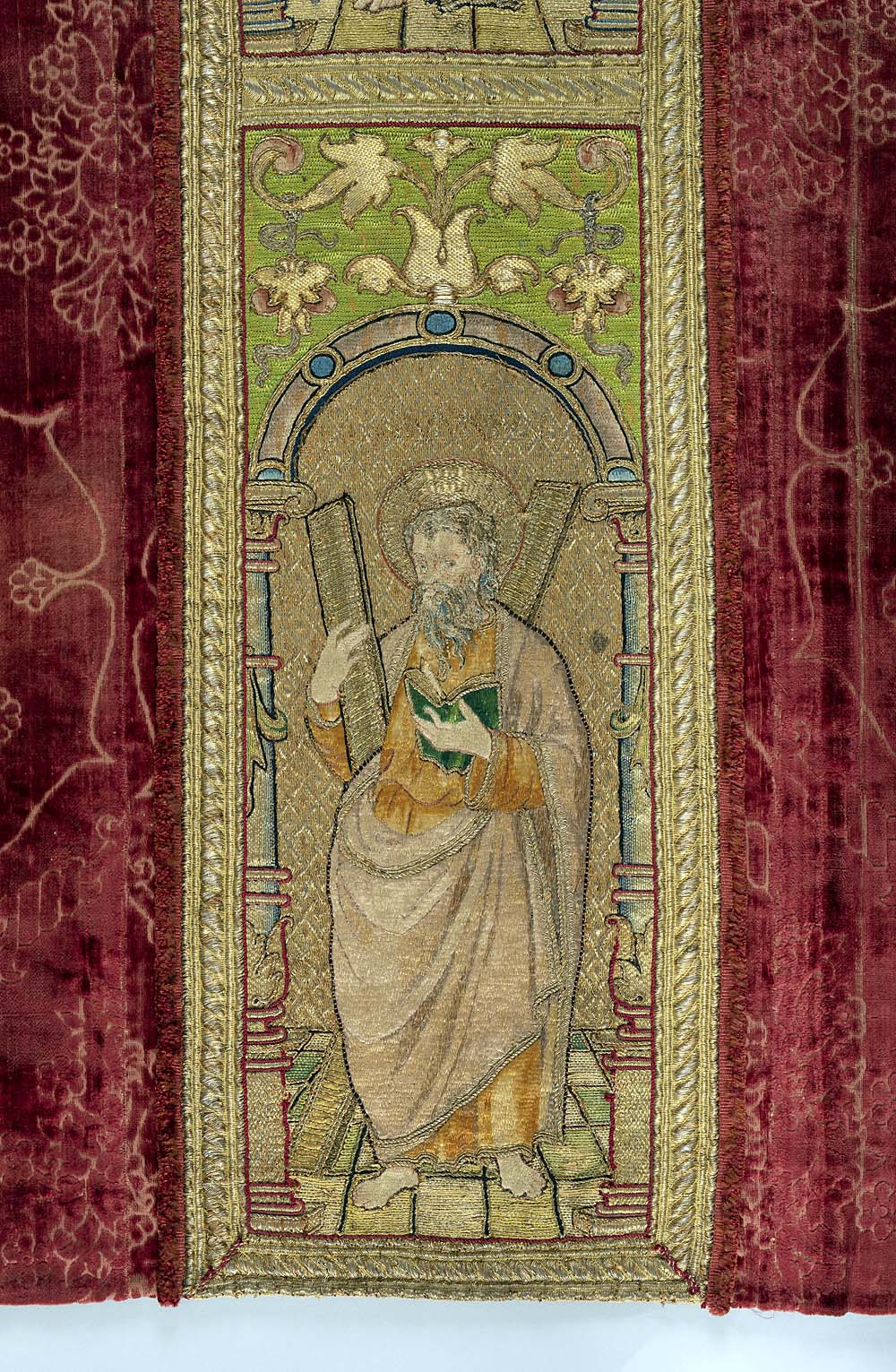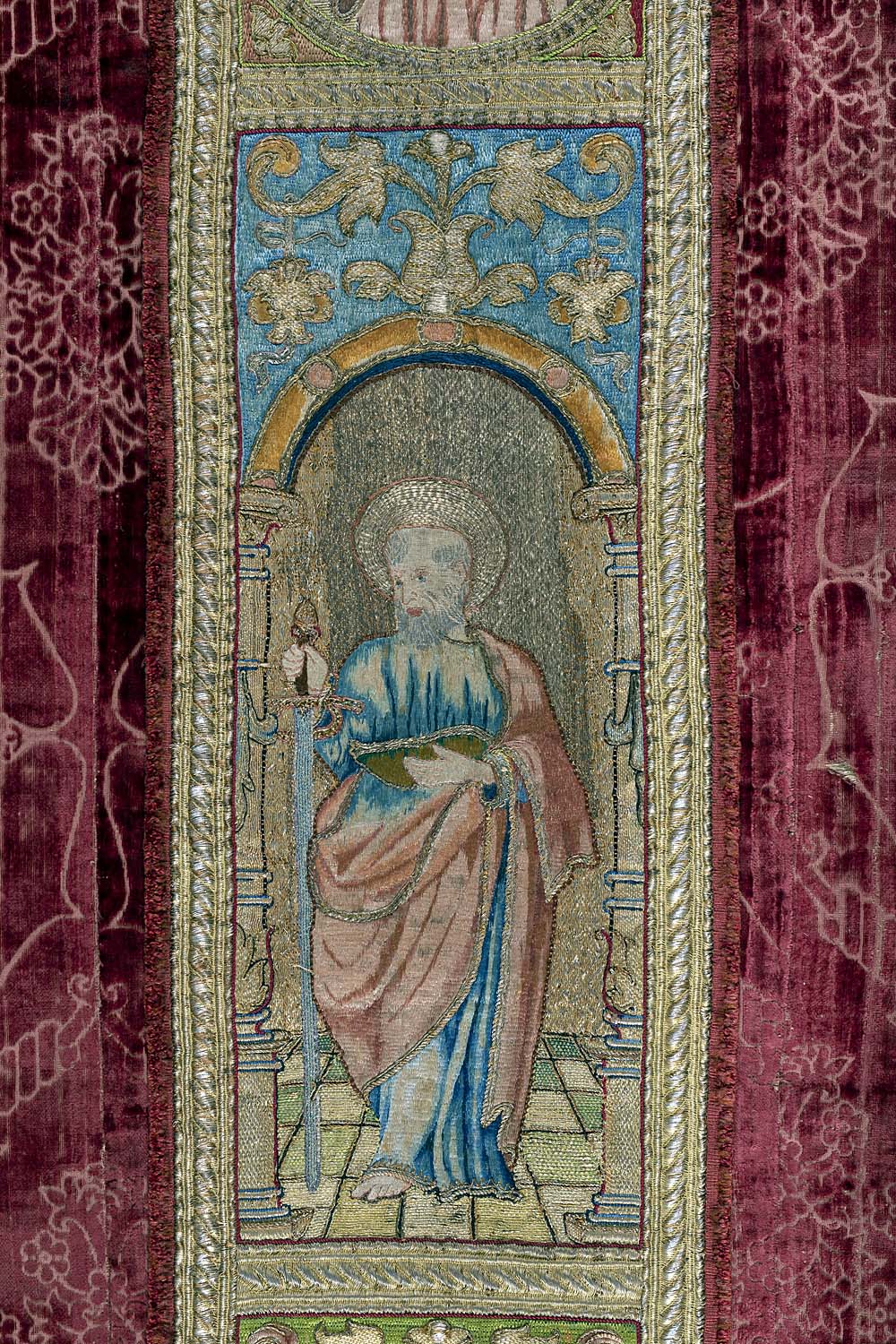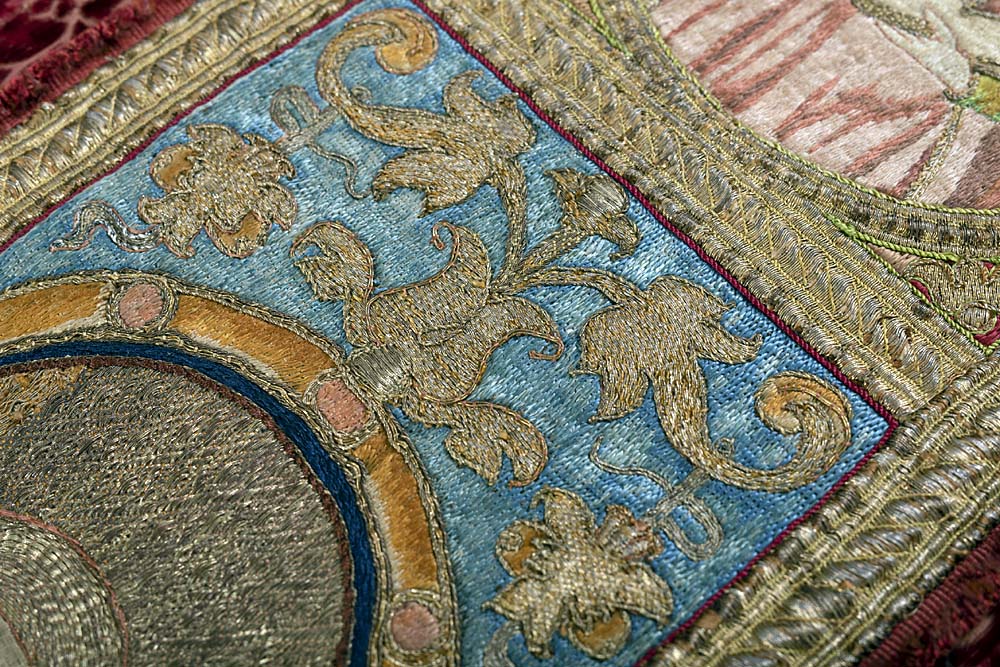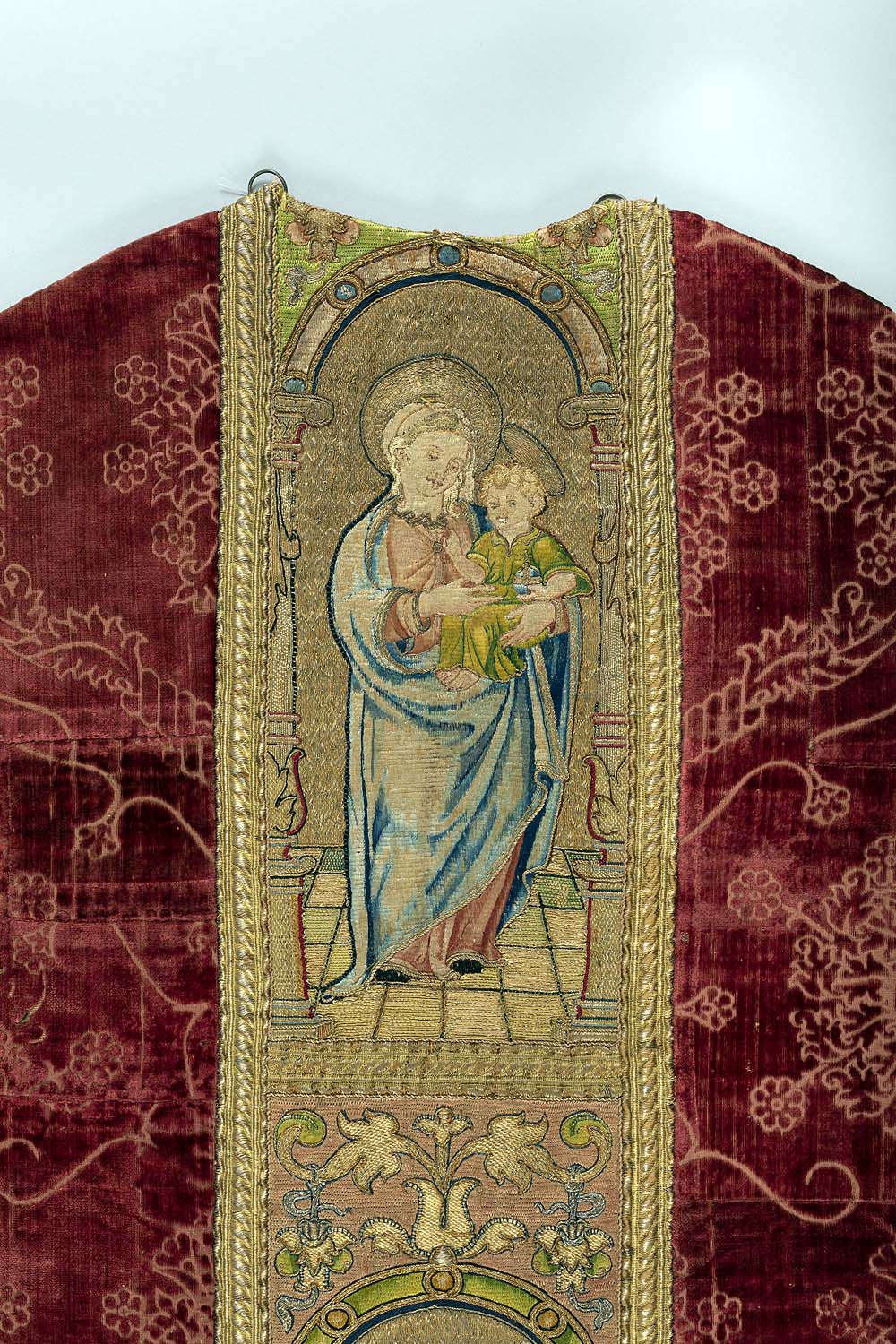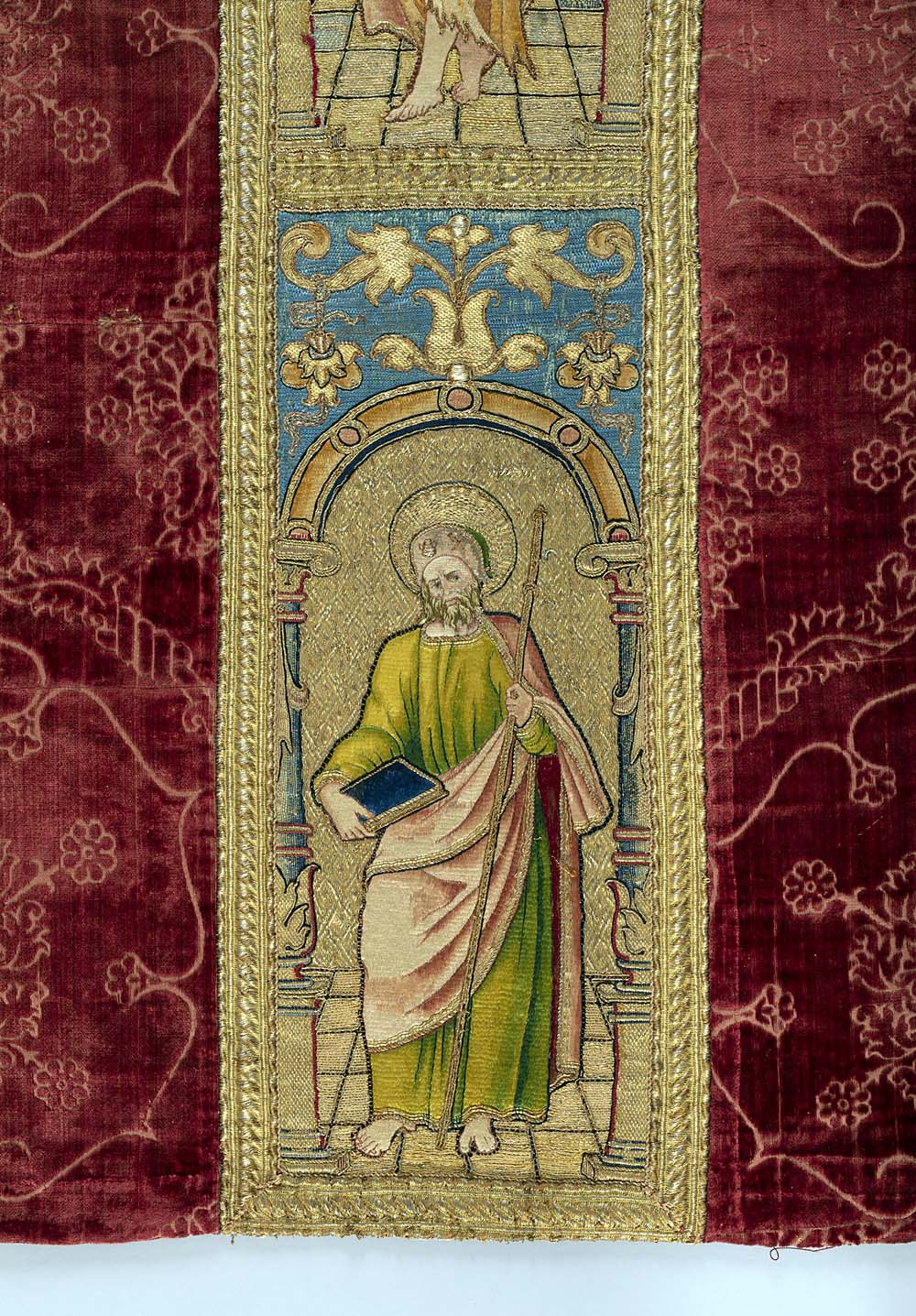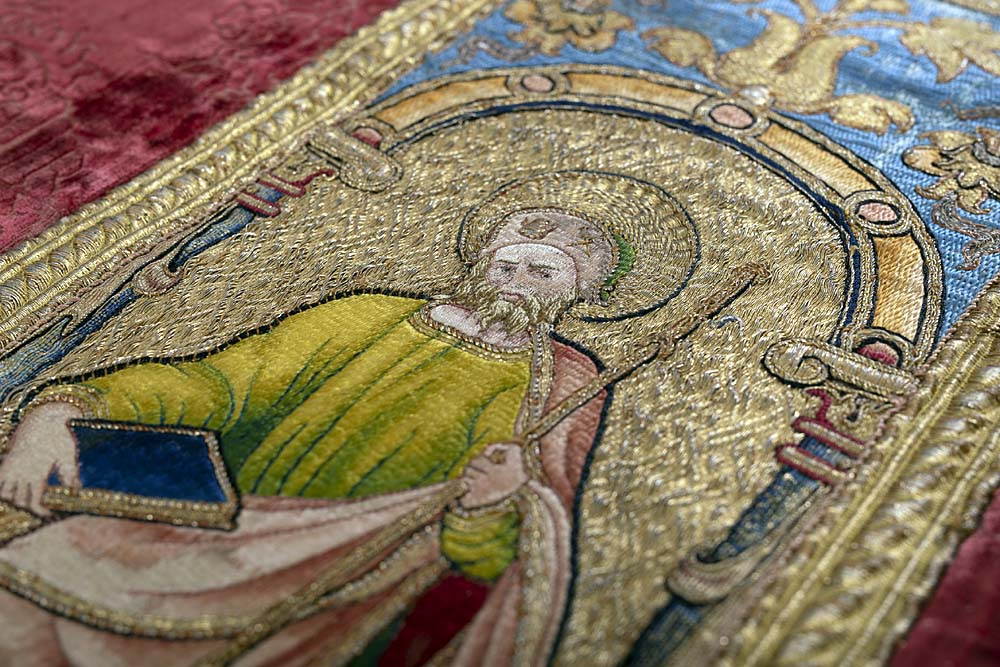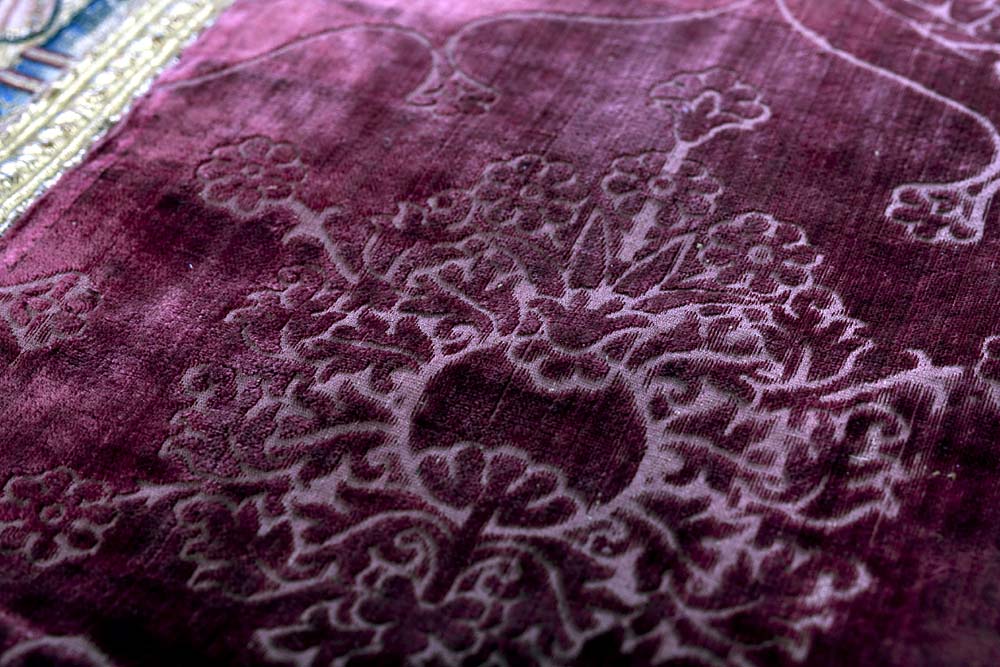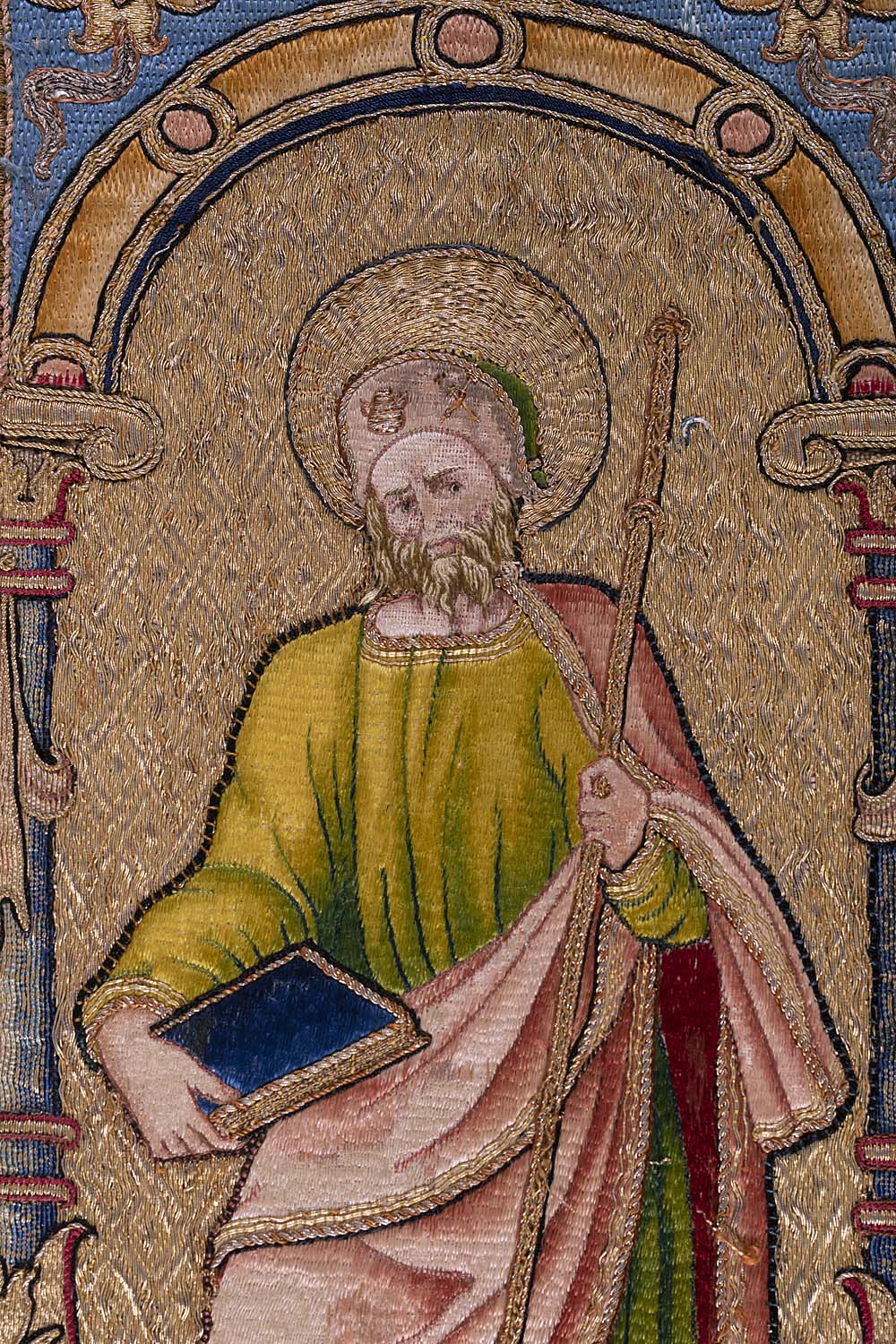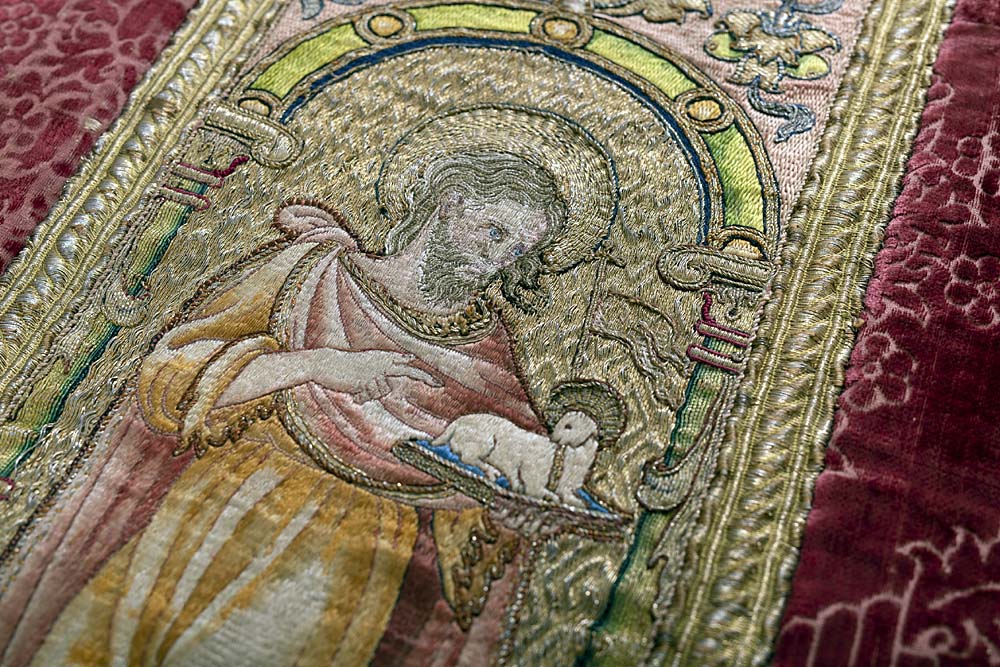Exhibition Index
2021 Online Exhibition
A Chasuble in Two Halves
Front - 130 x 54 cms
Rear -
126 x 68 cms
Workshop and chronology: Velvet: Italy or Spain, perhaps Valencia, 1490-1530. Embroidery: Italy or Spain at the Crown of Aragon workshop, 1500-1530; embroidery in gilt metal threads and polychrome silks on a linen tabby (canvas) ground, in satin stitch and or nué. Technique: Velvet: 2 warps; main and pile warp; red silk threads. Weft: yellow silk threads, doubles. Ground weaves: satin of 5, interruption 2 or 3? The principal material used in making of the chasuble is red voided velvet, that is, a type of velvet whereby the design is executed in the ground weaves, or where the patterning is achieved by areas deliberately left free of the pile warp. This particular example belongs to the group of velvets known as ‘ferronerie’ because of the pattern delineated by a fine outline thought to imitate ironwork. The style of the ‘pomegranate’ shaped motifs, as seen in this example, came to typify Renaissance textile design. Such large-scale motifs were particularly suited to velvets. According to L. Monnas, this sort of decoration was one of the most successful and lasting patterns of the 15th century. Many velvets of this typology were brocaded with gilt-metal threads or embellished with embroideries, as in our case.
'Apparelled in Celestial Light' Catalogue (.pdf 206 Mb)

